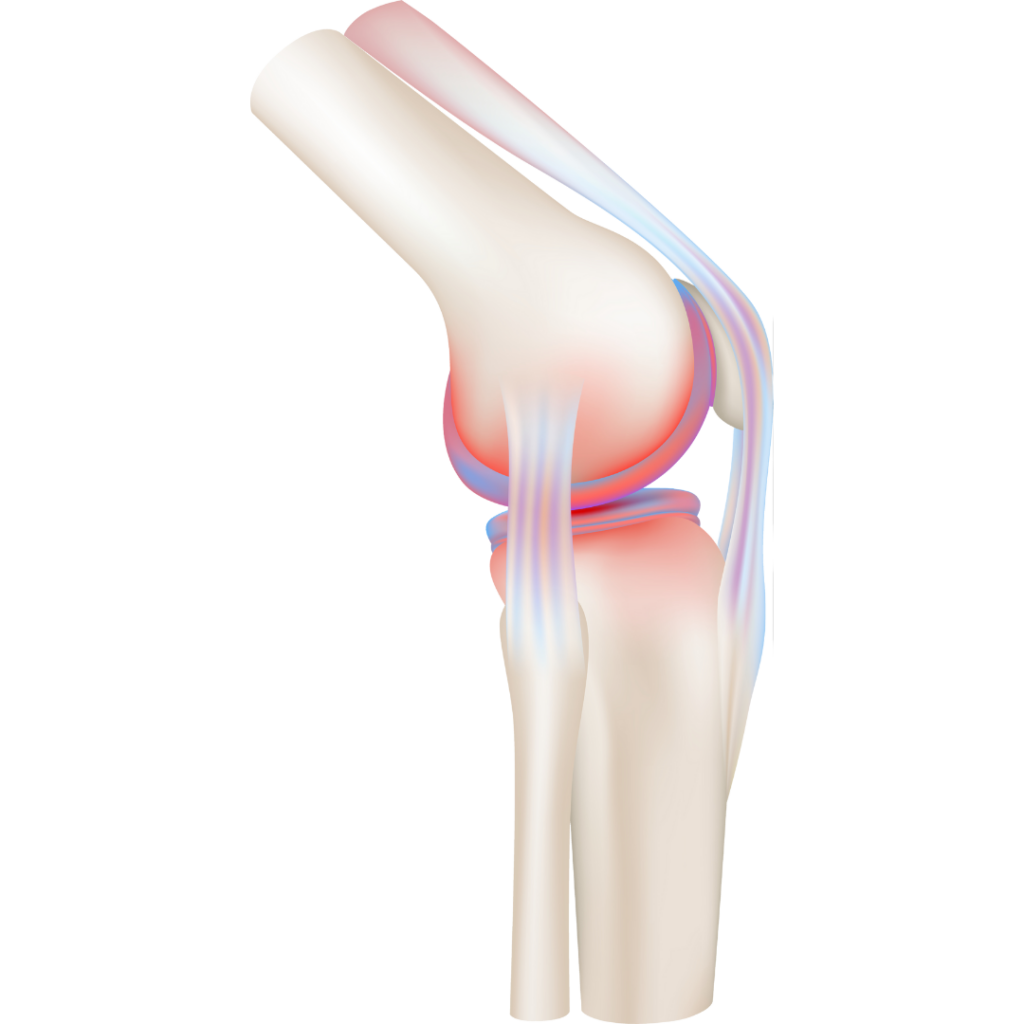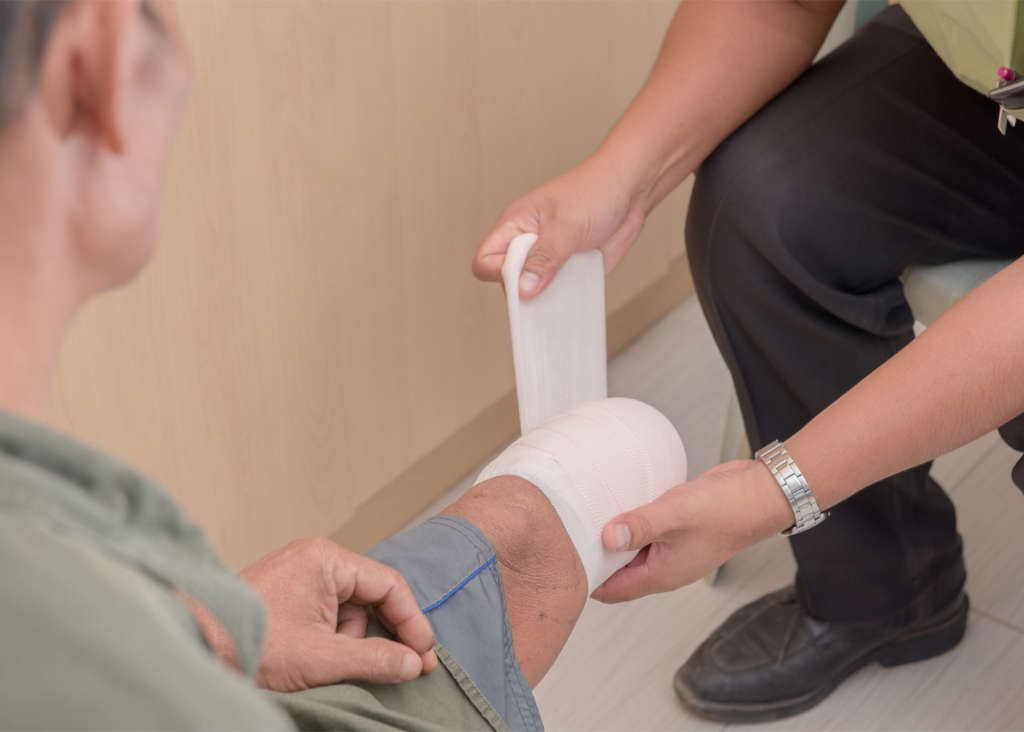Diller Law has helped clients who have had post-traumatic knee injuries. There are a wide array of injuries that can occur to the knee, and we know how severe some may be. Our attorney Dr. John Naranja MD, JD, who is a past practicing orthopedic surgeon, has professional experience handling knee injuries and has written in detail about these injuries in his book, Medical Evidence. Dr. John has also written this article to help educate our audience about knee injuries.
To better understand different types of knee injuries, it is important to understand the anatomy of the knee.
Here is a model of the knee where the skin and muscles have been removed. In this side view, we see the femur, or thigh bone at the top, and the tibia and fibular, or the bones that make up the shin at the bottom. Between the bones is the joint where cartilage is represented by the red and blue shades. In front of the diagram is the patella, or kneecap, that is connected to the quadriceps tendon and patellar tendon. The lateral collateral ligament is also visible extending from the femur to the fibula.
Common knee injuries include ACL injuries, patella injuries and meniscal injuries.
The reason that these can become more significant is injuries to these structure may lead to the development of post-traumatic arthritis.
Arthritis has to do with the lining of the knee, that is, the cartilage. When knee injuries occur to the meniscus or ACL, it contributes to the wearing away of the lining. When the lining wears away, the knee can rub bone on bone. The wearing away of the lining is just another name for osteoarthritis. When it is related to trauma, this is called post-traumatic arthritis.
Treatment for Post-Traumatic Arthritis
Post-traumatic arthritis will never get better. It is a progressive type of condition – meaning it can feel better sometimes, but long term it will only get worse. The extent of symptoms may vary between individuals.
Although the condition will never heal entirely, there are different options for treatment of post-traumatic arthritis.
- Activity modification. The initial option for treatment is activity modification. If you are doing. a lot of walking or running you may modify and decrease those types of activities to determine its effects.
- Non-steroid anti-inflammatories: these medication try to decrease the inflammation caused by the wearing away within the joint, but it does not replace the cartilage. It only helps to decrease symptoms..
- Physical Therapy and Stretching. This can potentially help build the muscle around the knee which can help to take pressure off and/or maintain range of motion.
- Injections. Corticosteroids, steroids, or viscosupplementation. Steroid injections are a form of anti-inflammatory that can be injected directly into the joint. Viscosupplementation is a form of iinjection that tries to mimic the lubrication fluid within the knee.
- Surgeries. Before a total knee replacement an arthroscopic debridement surgery may be done which cleans out the inside of the knee. Any loose particles may be removed in an attempt to decrease symptoms.
- Total Knee Replacement: In this type of treatment, the joint lining is now replaced with a special metal and plastic component that allows joint motion.
Total Knee Replacements
The majority of people with total knee replacements no longer feel the same pain they felt before the surgery. However, most studies indicate that knee replacements maybe last about 15-20 years. After that time period, patients may undergo revision surgery. A revision surgery removes that portion of the knee replacement that has worn out, and replaces it with another component. These revisions are limited, however, because in each revision, native bone may be less, and implantation then becomes more challenging.
Amputations
We have had clients that have suffered very severe catastrophic injuries that have led to amputations about the knee. Amputations about the knee may be categorized into above knee amputations, knee disarticulations, and below knee amputations.
Surgeons will make every attempt possible to preserve as much of the tissue surrounding the knee as possible. This is because the energy requirements for walking with a prosthesis are less when more of the anatomy is preserved.
To find out even more information, watch Dr. John’s Knee Injuries video.


